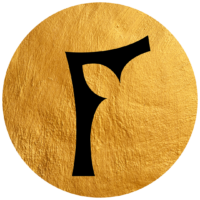Frari, inside and outside

📍 🇮🇹 Frari, inside and outside
The exterior of a church is often enough to understand its essence. There, French author Chateaubriand is brutally honest about the Frari that he visited twice in 1806 and in 1833: "us Frenchmen, accustomed as we are to the Greek exteriors of our churches, are quite struck by these brick basilica exteriors, unattractive and common to the eye...".
Staying in Venice in 1849-50, going beyond Chateaubriand’s rapid overviews, English historian Ruskin produced an extensive study of the city’s architectural features - and of the Frari notably.
Founded in 1250, consecrated in 1492, this church is one of the earliest Gothic buildings of Venice. Stroll all around it before entering and you will notice quatrefoil traceries at the apse, "the real root of the Ducal Palace facade" (Ruskin).
Inside, the most interesting (and beautiful) funeral monuments can be found near the sanctuary, in a chapel on the right. An unknown knight, laid in his mail, face not turned towards the spectator (you, us) but towards God only, above him a simple image of St Joseph holding Baby Jesus. Peaceful, deeply religious: 13th century. The Middle Ages, still.
Facing him, the tomb of a Florentine ambassador, Duccio degli Alberti, "the first in Venice on which images of the virtues appear" wrote John Ruskin. Small lateral statues of Justice and Temperance. 14th century. Later work. Closer to Renaissance's individualistic values and to our own mentality.
Of note as well, an “Assumption of Christ” by 16th century painter Titien. "A vulgar mass of messy cherubs" described Ruskin, cold, almost scornful; but for French novelist Marcel Proust (who admired and translated Ruskin): "one of these famous things that my imagination had desired for so long...".
Admiration does not mean imitation, and Proust will part with Ruskin on occasions during his own 1900 Venetian journeys.
____ Sources ____
>> John Ruskin, “The Stones of Venice”, 1851
>> Marcel Proust, "A la recherche du temps perdu", 1927
